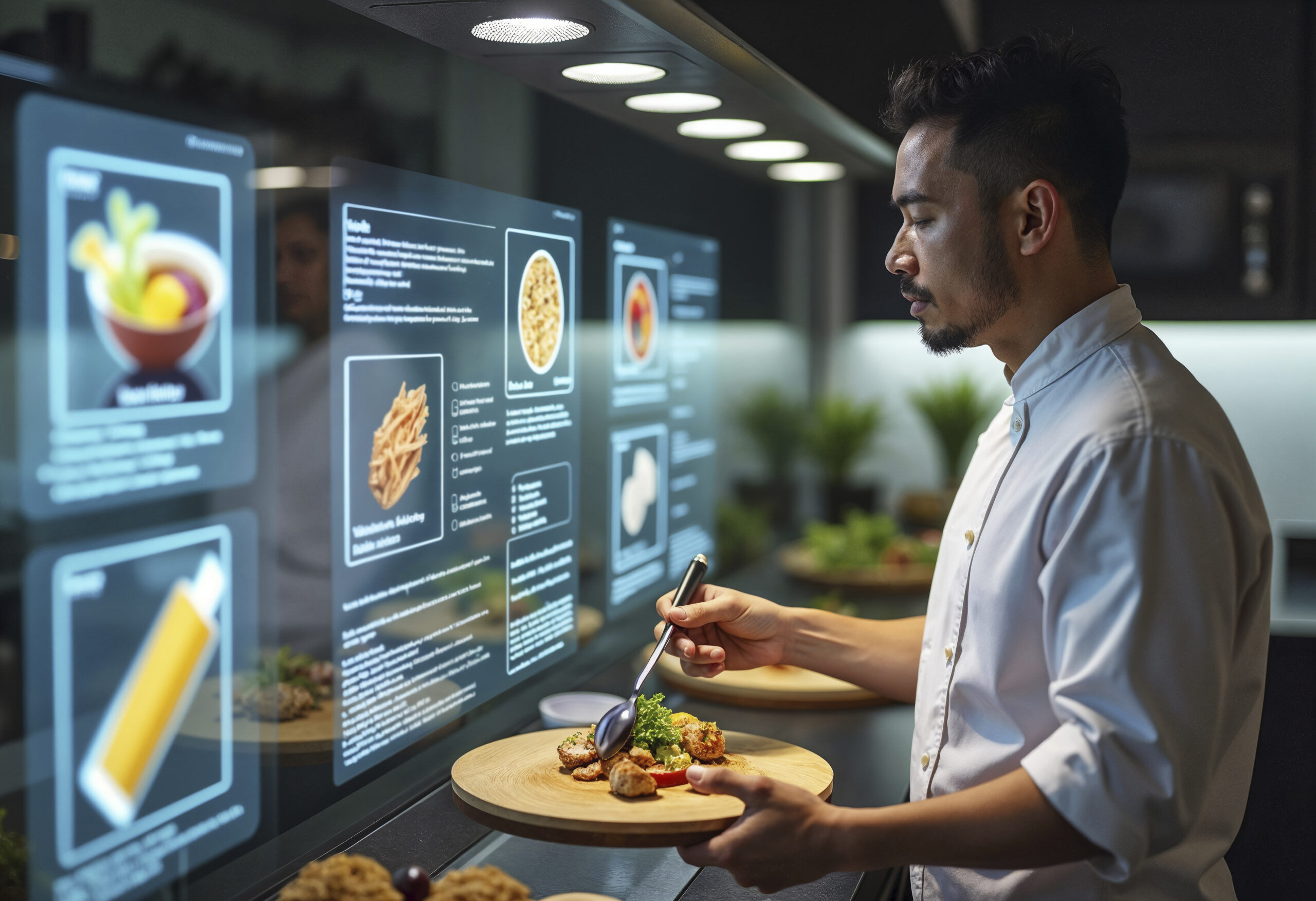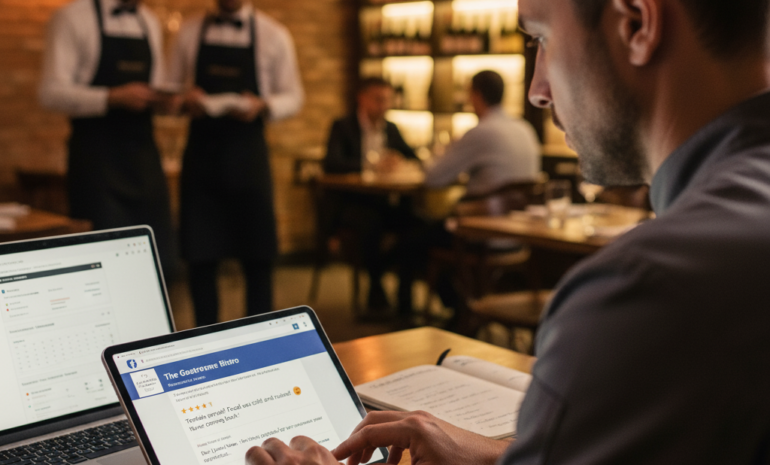Running a restaurant today means being highly active where people spend most of their time online.
People often search for nearby places to eat, check menus before stepping out, and read reviews before deciding where to go.
If your restaurant is not visible or clear online, you risk losing customers before they even try your food.
This guide is written for restaurant owners who want practical, simple steps that actually bring results.
From setting up your profiles to using content that catches your attention, every part focuses on what can be done with the tools you already have.
Each section highlights one area that matters and shows how to make it work for your restaurant.
Key Areas to Focus for Restaurant Marketing Online
To attract more customers and grow steadily, your restaurant needs to show up clearly across important online platforms.
The sections below cover the areas that help people find, explore, and choose places with confidence.
1. Build a Strong and Consistent Online Identity
Before running any campaign, your restaurant’s online identity is the foundation of its digital presence.
It encompasses key brand elements, including your logo, color scheme, communication style, and overall visual identity.
These should appear consistently across every platform, including your website, Google Business Profile, Instagram, and Facebook.
When users land on any of your pages, the feeling, tone, and presentation should reflect what they would experience in your restaurant.
Use the same logo, menu links, biography, and hashtags across all platforms to build recognition and trust.
Ensure that your restaurant name is easy to search and that your description clearly states your food category, such as fast food, fine dining, or fusion.
A memorable and consistent identity makes it easier for customers to tag, mention, or recommend you.
line branding should be strong enough to leave a lasting impression.
2. Make Your Website Mobile-Friendly and User-Centered
Most users search for restaurants using their mobile phones. If your website does not load quickly or display correctly on mobile devices, you are likely to lose potential customers.
A restaurant website must be simple, clear, and designed to provide quick access to key information.
Include your menu, contact number, location, hours of operation, and an option to reserve a table or place an online order. Add attractive food and interior images to offer a visual experience.
Embed a map for directions, and ensure your contact number is clickable.
The website should load within three seconds to avoid high bounce rates. Additionally, optimize your content for search engines using your restaurant’s name, type of cuisine, and city name.
A poor website reflects poorly on the overall experience you provide. It should feel like an extension of your actual restaurant reliable, well-managed, and worth visiting.
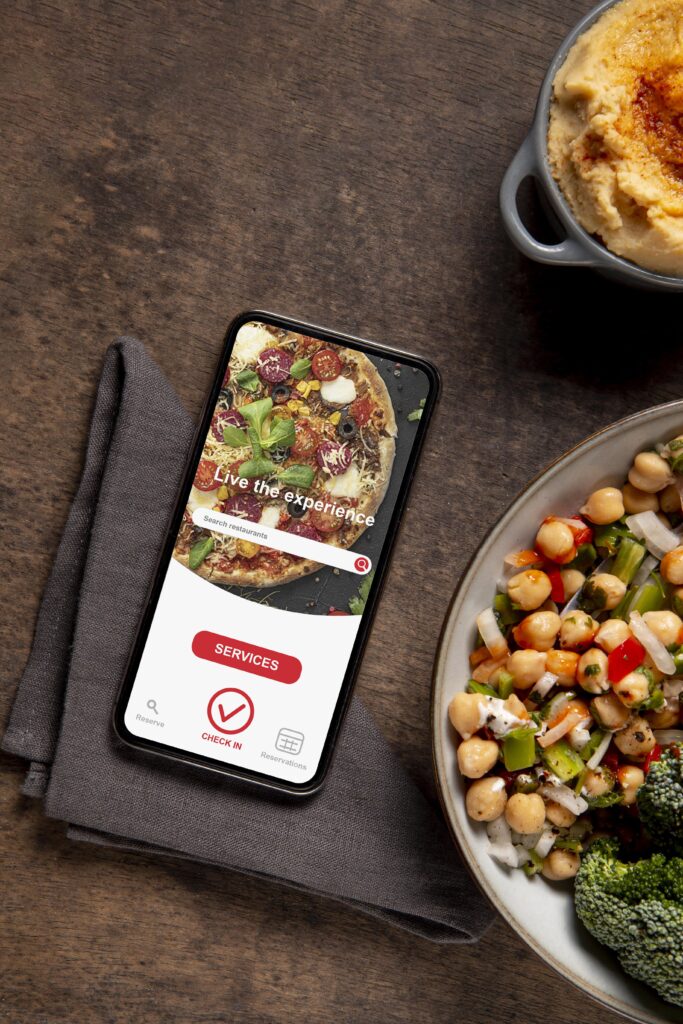
3. Use Google Business Profile to Improve Local Reach
Google Business Profile is one of the most powerful free tools for local restaurant marketing.
It helps your restaurant appear in local search results, Google Maps, and the top section of Google listings.
Start by claiming your profile and entering accurate details such as your restaurant name, address, phone number, website, and hours.
Upload attractive photos of your food, location, and interior. Choose a specific category like “Pakistani Restaurant,” “Fast Food,” or “Family Dining.”
Include your full menu in PDF or image format. Encourage satisfied customers to leave honest reviews, and always reply professionally to all feedback, whether positive or negative.
Keep your listing updated with fresh photos, special announcements, and current offers. Use Google Posts to share promotions directly with people searching for restaurants.
An optimized profile builds credibility and increases the chances of foot traffic from nearby customers.
4. Keep Your Menu Updated Across All Platforms
Your restaurant’s menu must remain consistent and up-to-date everywhere your brand appears.
This includes your website, Google Business Profile, Facebook page, Instagram story highlights, and food delivery apps.
Many restaurant owners forget to update pricing, availability, or new items, leading to customer confusion and disappointment.
The formatting should be clean, mobile-friendly, and easy to read. Instead of using only PDF files, consider adding clear text and images.
Include special items like seasonal dishes, chef recommendations, or dietary-friendly options in a separate section.
Users often check the menu before visiting or placing an order, and any outdated information can cost you business.
Keep prices accurate, names consistent, and visuals attractive. Adding photos next to items increases engagement and appeal.
A current and well-presented menu not only improves the user experience but also reflects your restaurant’s attention to detail and professionalism.
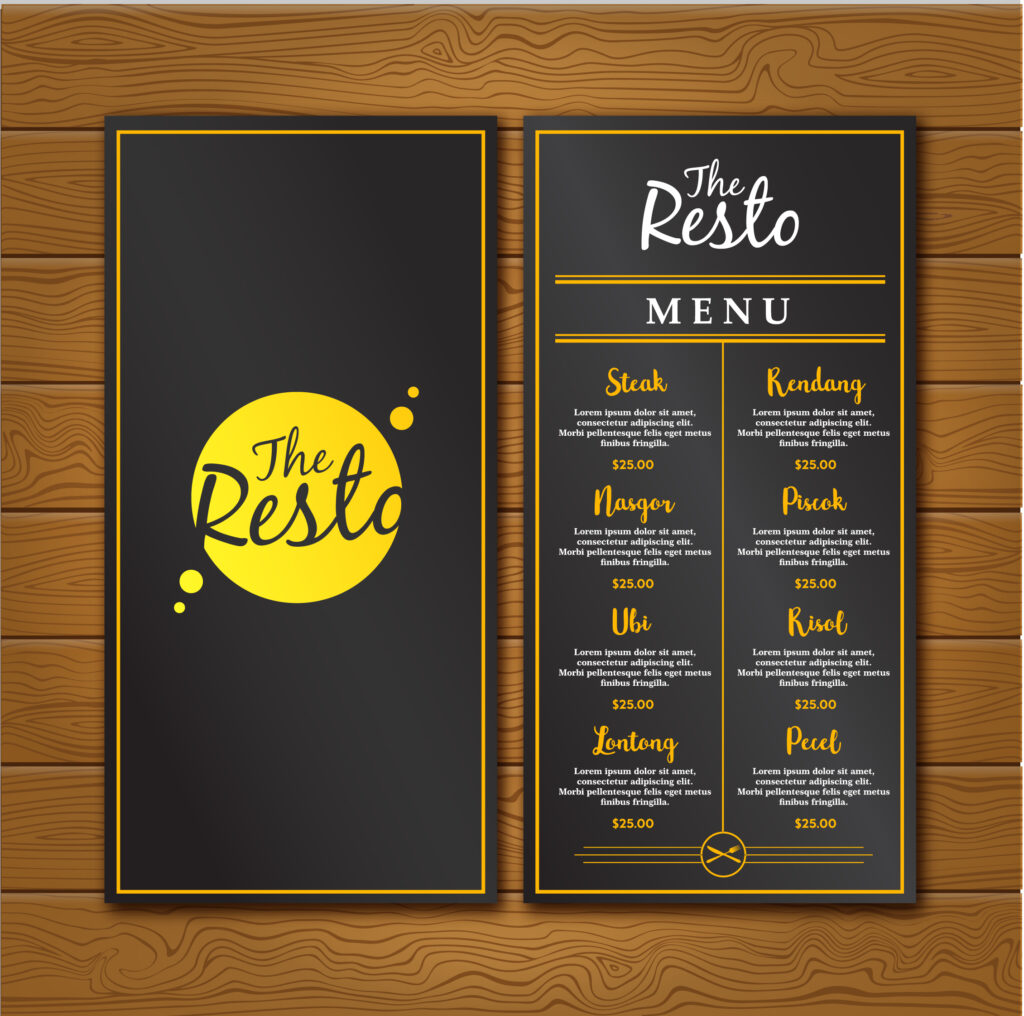
5. Use High-Quality Photos and Reels to Capture Attention
Visual content plays an important role in restaurant marketing. Beautiful images of your food, ambiance, and presentation can create desire long before a customer even visits.
Invest in professional photography at least once every few months. Feature your best-selling dishes, signature drinks, and cozy interior in vibrant detail.
Showing moments like kitchen prep or staff setting up adds a genuine, relatable feel to your content.
Short videos or reels on Instagram and TikTok are especially effective. Create 15 to 30-second clips that highlight food preparation, plating, or customer reactions.
Use trending music and relevant hashtags to increase discoverability. Such content often goes viral within the local area and builds strong connections with potential customers.
People today are not just looking for food, they are looking for a memorable experience.
Your visual content should reflect that feeling and make your restaurant instantly appealing at first glance.
6. Use Instagram Stories for Daily Updates
Instagram Stories are an excellent tool to stay present in the minds of your followers without overloading their feeds.
Use stories to share daily offers, special menu items, behind-the-scenes moments, staff celebrations, and quick testimonials.
Unlike regular posts, stories allow you to be casual and creative. You can run polls, ask questions, and build anticipation for upcoming events using countdown features.
Save your best content in story highlights under categories like “Offers,” “Lunch Deals,” or “Desserts.”
This helps new visitors quickly understand what your restaurant offers. Instagram Stories create a sense of immediacy and keep your audience engaged.
Most importantly, they humanize your business, showing the real people and culture behind your food.
If your profile allows, include links in stories to direct users to your reservation system or online ordering page.
With regular story updates, your restaurant remains top-of-mind for hungry users nearby.
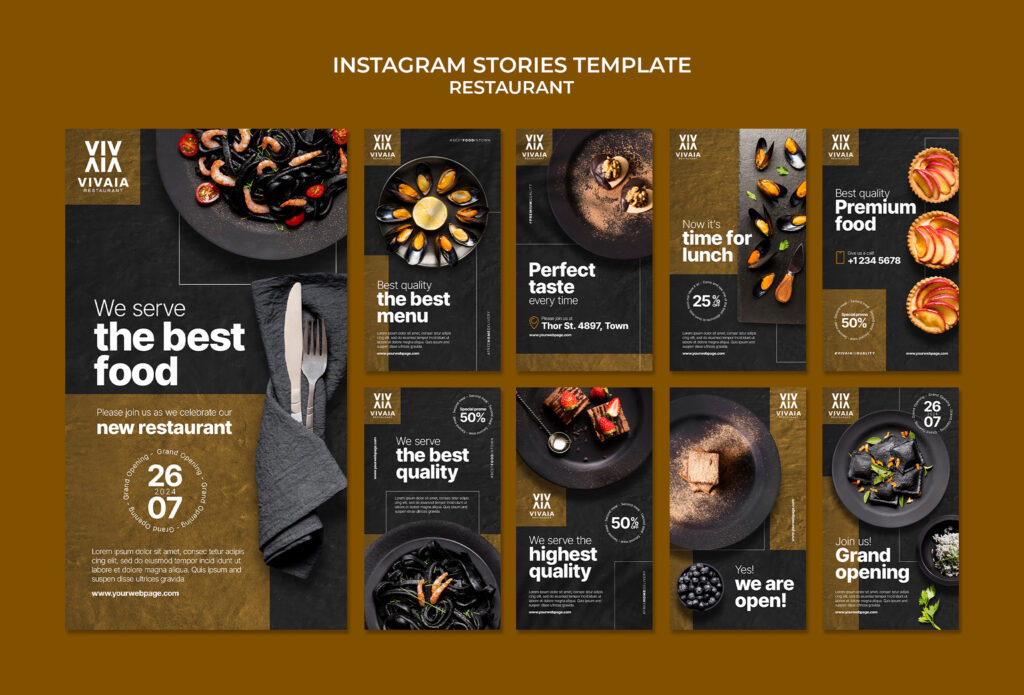
7. Launch Customer Loyalty and Referral Programs
Loyalty and referral programs are simple but effective strategies for increasing repeat customers and word-of-mouth marketing.
Offer incentives such as “Buy 4 meals and get the 5th free” or “Refer a friend and get a discount on your next order.”
These programs make customers feel appreciated and motivated to introduce your restaurant to others.
Promote these offers on your website, social media pages, and even in-store through table tents.
You can also collect customer phone numbers or emails in exchange for loyalty points.
Many digital tools make it easy to manage these programs, even for small restaurants.
When customers see that they are getting something in return for their loyalty, they are more likely to return and speak positively about your restaurant.
This builds both trust and recurring business without spending heavily on advertising.
8. Use Location-Based Advertising for Local Reach
Digital advertising is most effective when targeted correctly. Instead of running broad campaigns, use location-based targeting to reach people who live or work near your restaurant.
Platforms like Facebook and Instagram allow you to set a radius around your restaurant so that only nearby users see your promotions.
You can target people based on interests such as food lovers, families, or office workers. Show them your lunch offers, weekend deals, or special events.
Keep the ad visuals attractive and highlight what makes your restaurant unique. Include a clear call to action like “Book Now,” “Order Online,” or “Visit Today.”
Even a small advertising budget can bring solid results when focused on the right audience.
Location targeting ensures that you are not wasting money reaching people who cannot or will not visit your restaurant in the first place.
9. Collaborate With Local Food Bloggers and Influencers
Local food influencers have dedicated followers who trust their tastes and opinions.
Partnering with these influencers can bring highly targeted visibility to your restaurant. Invite them for a complimentary tasting and ask if they can post about their experience.
Make sure your restaurant looks and feels its best during the visit. You can also offer them special deals for their audience, such as a discount code or exclusive menu item.
Influencers often post Instagram Reels, TikTok videos, or detailed reviews that create buzz and drive footfall.
Be clear about expectations in advance, but allow them the freedom to be creative and authentic.
The goal is to reach new potential customers through someone they already follow and admire.
A few genuine posts from the right influencer can be more powerful than running paid ads to a cold audience.

10. Collect Customer Reviews and Respond Promptly
Online reviews play a big role in influencing restaurant decisions. A strong presence on platforms like Google, Facebook, and TripAdvisor can make people choose your restaurant over a competitor
. After each visit, kindly request satisfied customers to leave a review. You can do this through table cards, QR codes, or follow-up messages.
Respond to all reviews, both positive and critical. Thank people for kind words, and address criticism professionally without being defensive.
A good response to a negative review can even win over new customers.
Highlight positive reviews on your website and social media pages to show real feedback from real people.
The more honest and recent reviews you have, the more trustworthy your restaurant appears.
Reviews also help your visibility in local search results, bringing in more traffic without any extra cost.
11. Use WhatsApp to Share Daily Deals and Confirm Bookings
WhatsApp offers a direct, personalized channel to connect with current customers
Create a broadcast list of people who have agreed to receive updates, and share daily deals, reservation confirmations, or special event invites.
Compared to email or social platforms, WhatsApp messages are often viewed immediately.
Keep the messages short, clear, and visually appealing with one photo and a brief description.
You can also use WhatsApp Business features like auto-replies, quick responses, and catalog menus to enhance the experience.
Sharing booking confirmations or order updates on WhatsApp makes customers feel more connected and valued.
However, avoid spamming or sending too many messages in a week. Respect their privacy and only send updates when necessary.
This channel builds personal relationships and often leads to faster customer actions.
12. Monitor Performance Using Insights and Analytics
Digital marketing becomes more effective when it is driven by data. Use analytics tools provided by platforms like Facebook, Instagram, and Google to monitor how your campaigns are performing.
Look at engagement, clicks, views, and conversion rates to understand which posts or ads are driving results.
If a particular dish receives high engagement in posts, consider featuring it more often.
If most orders come from a certain time slot, run your promotions accordingly.
Avoid guessing or following trends blindly. Instead, base your next steps on actual customer behavior and feedback.
Regular monitoring helps you improve your strategy, reduce wasted budget, and maximize results.
Even free tools like Google Analytics and Meta Business Suite can provide deep insights if checked consistently. Make reviewing your performance a weekly habit to keep improving.

13. Connect Offline Experience With Online Efforts
Your physical restaurant and digital marketing should support each other.
Add QR codes to your table menus or bills that lead customers to your social media pages, website, or feedback forms.
Promote online-exclusive offers inside your restaurant to encourage digital interaction.
For example, you can offer a discount to anyone who posts about your food and tags your page.
Add printed materials on tables or near the counter that highlight your Instagram or Facebook handles.
You can also use digital signage inside the restaurant to showcase top social media posts or customer reviews.
This blended experience helps you engage with customers in multiple ways, increasing their loyalty.
When the offline and online experiences feel connected, it creates a stronger brand memory.
People who enjoy your in-person service are more likely to follow and engage with you online when guided clearly.
Looking to grow a restaurant without guessing what works online?
A clear plan matters more than random posts or boosted ads.
Brandout helps restaurants set up everything the right way, from building a fast, mobile-ready website to running focused digital marketing strategies that match the business type and audience.
Instead of relying on luck or trends, Brandout works with real data and goals to bring in steady leads through local search, content, and targeted campaigns that fit the restaurant’s budget and style.
Final Thoughts:
As you have seen throughout this guide, building and maintaining a strong presence requires more than just serving good food.
Every part of your online setup contributes to how customers discover, judge, and connect with your business.
A focused approach to digital marketing for a restaurant involves clear planning, consistent content, and platforms that support business goals.
Restaurants that follow a structured digital path often gain steady growth and better customer retention.
Rather than testing random ideas, a well-executed strategy delivers measurable progress.
Frequently Asked Questions:
What type of marketing do restaurants use?
Restaurants use social media, local SEO, website marketing, referral offers, and targeted ads to attract and retain customers. Visual content and customer reviews play a key role.
How to write a restaurant marketing plan?
Start by defining goals, audience, and budget. Outline strategies for social media, website, search visibility, and promotions with a timeline for execution.
How to promote a restaurant on social media?
Share quality photos, reels, and customer stories. Use offers, and hashtags, and collaborate with local creators to increase engagement and reach.
How do I attract customers to my restaurant?
Keep your website, Google listing, and social media updated. Use visual content, local targeting, and simple loyalty offers to bring people in.

